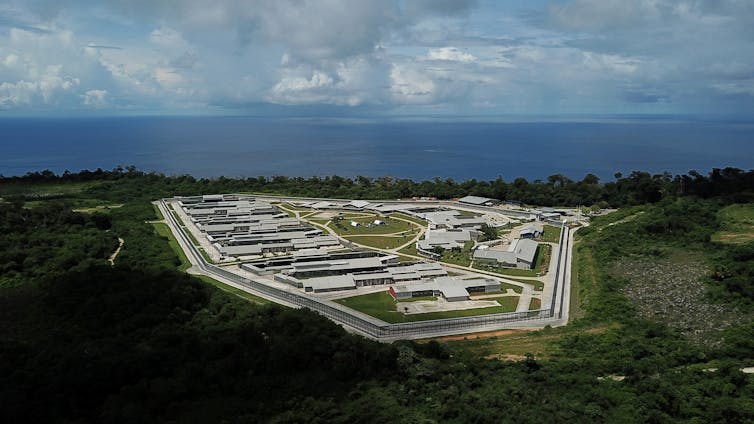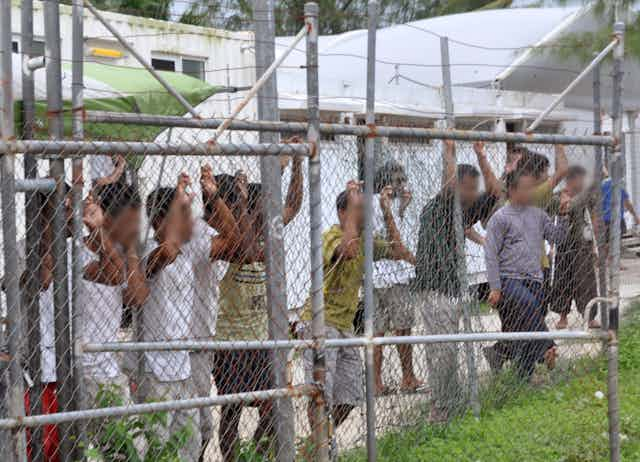This week, the High Court of Australia ordered the release of a Rohingya man from immigration detention where he had been for the last five and a half years.
Commentators and human rights groups have been celebrating this decision, which indicates the court will overturn a 20-year-old precedent.
The court has stated it will release its decision at a later time. It is important to wait for that judgement to determine the full implications of the decision and how it may limit the government’s power to detain non-citizens.
But here’s a brief rundown on the background of the case and some considerations of what could happen next.
Read more: 'I have no rights': what happens to stateless people in Australia after the High Court's ruling?
What laws did the case focus on?
The laws in question are in the Migration Act, which states a non-citizen who does not hold a visa must be detained.
Currently people in immigration detention do not have the right to have a court determine whether their detention is necessary, reasonable, and/or proportionate. These assessments are undertaken by departmental officials and the minister.
The law considers detention mandatory, irrespective of the individual’s circumstances.
In the case of Al-Kateb v Godwin, the chief justice of the High Court described the need for detention:
A person […] might be young or old, dangerous or harmless, likely or unlikely to abscond, recently in detention or someone who has been there for years, healthy or unhealthy, badly affected by incarceration or relatively unaffected. The considerations that might bear upon the reasonableness of a discretionary decision to detain such a person do not operate.
The detained person must remain so until granted a visa or is removed.
Removal, if it’s needed, must occur as soon as “reasonably practicable”.
Over the years, many cases have tested these laws, and until now, the High Court has upheld them.
The lack of time limits on detention, and the inability to challenge it, have made Australia an outlier internationally.
The laws have also been heavily criticised, both domestically and globally.
Such has been the egregious nature of the system that the High Court allowed the UNSW Kaldor Centre for International Refugee Law and the Human Rights Law Centre to argue the international human rights dimensions of the case.
Despite this, the policy has had bipartisan political support for decades.
Read more: 'Futile and cruel': plan to charge fees for immigration detention has no redeeming features
Who was at the centre of the case?
The Rohingya refugee at the centre of the case is referred to as “NZYQ”. He’s around 30 years old.
As a Rohingya, he had not been able to obtain citizenship of Myanmar and was stateless.
He had arrived in Australia by boat in 2012. He had been granted a temporary visa, but this was cancelled in 2015 after he committed a criminal offence and was sentenced to a term in prison.
Still unable to get a visa, he was transferred to immigration detention once he’d served his sentence.
Australia accepted the man could not be sent to Myanmar, and instead tried unsuccessfully to have a number of other countries take him via their refugee or humanitarian programs.

Having found there was no country he could be removed to in the “reasonably foreseeable future” and his visa refused, the man was facing the prospect of remaining in detention indefinitely.
In light of this, the High Court found his ongoing detention was unlawful and they ordered his immediate release from detention.
Law that comes with a cost
There is an increasing number of people in detention who remain there for long periods of time. Some are stateless, and others who can’t be returned to their home countries due to risk of persecution.
Over the past five years, the average length of detention has increased from 445 days to 708 days. Some people have been detained for more than 10 years.
One of the many criticisms levelled at this system is that it’s extremely expensive.
Between 2020 and 2021, the average cost to the Australian taxpayer for one person in an immigration detention facility was $428,542.
That’s not to mention the significant physical and mental health toll on people.
There have been close to 3,000 incidents of self-harm, real and threatened, in detention over the past five years.
So what happens in the short term?
As a first step, the government may be facing the prospect of releasing a number of people who have been detained for several years.
It is estimated there may be 92 people impacted by the judgement.
The government has stated the Rohingya man in the case has been released on “strict conditions”, but we don’t know what sort of visa he might be on.
It is not clear what those conditions are, but legally, a person can be released from detention on a temporary “bridging visa”.

The Department of Home Affairs can impose conditions on a bridging visa which could include:
where the person lives
reporting regularly to the Department of Home Affairs
that the person “not engage in criminal conduct”
that they comply with a specific “Code of Behaviour”.
This, of course, should be accompanied by a range of psychological and social support services, which are currently very limited.
There will need to be consideration for better pathways to more visa certainty and permanent residency, especially for stateless people.
Legislative reform on the cards
We need to wait for the judgement to determine what, if any, legislative reform may be needed, but the government will be considering a number of options.
We should use this opportunity to ensure our laws comply with our human rights obligations.
International standards specify that a person detained for immigration purposes must be brought before a judicial authority “promptly” and that their detention must be subject to “regular periodic reviews”.
Read more: New immigration detention bill could give Australia a fresh chance to comply with international law
There is a substantial body of evidence demonstrating that hasn’t been the case for far too long.
A key legislative reform should be to make detention discretionary instead of mandatory. People should also have access to independent review of their detention.
There has been a wealth of inquiries, submissions and examples from overseas which the government could look to, for a start.
More will be revealed about this case in the coming weeks and months, but there are many things the government can start doing immediately to better balance this unfair and punitive system.

